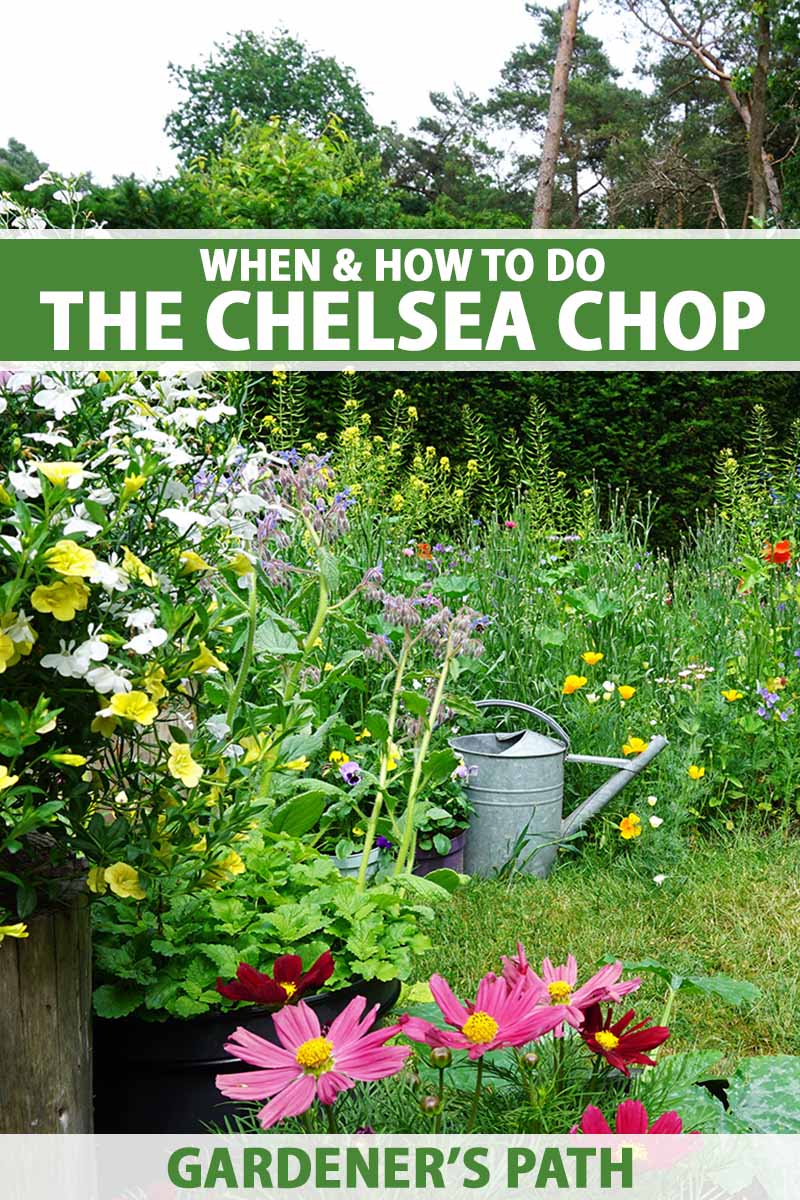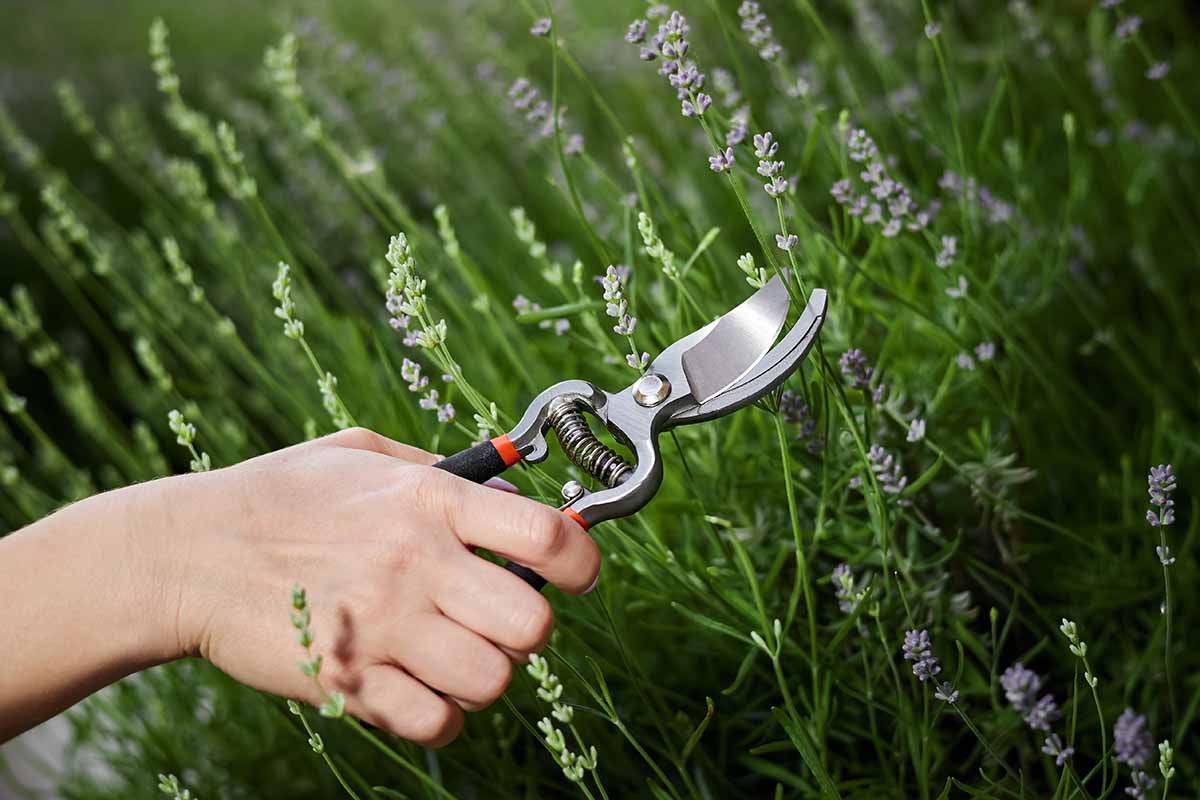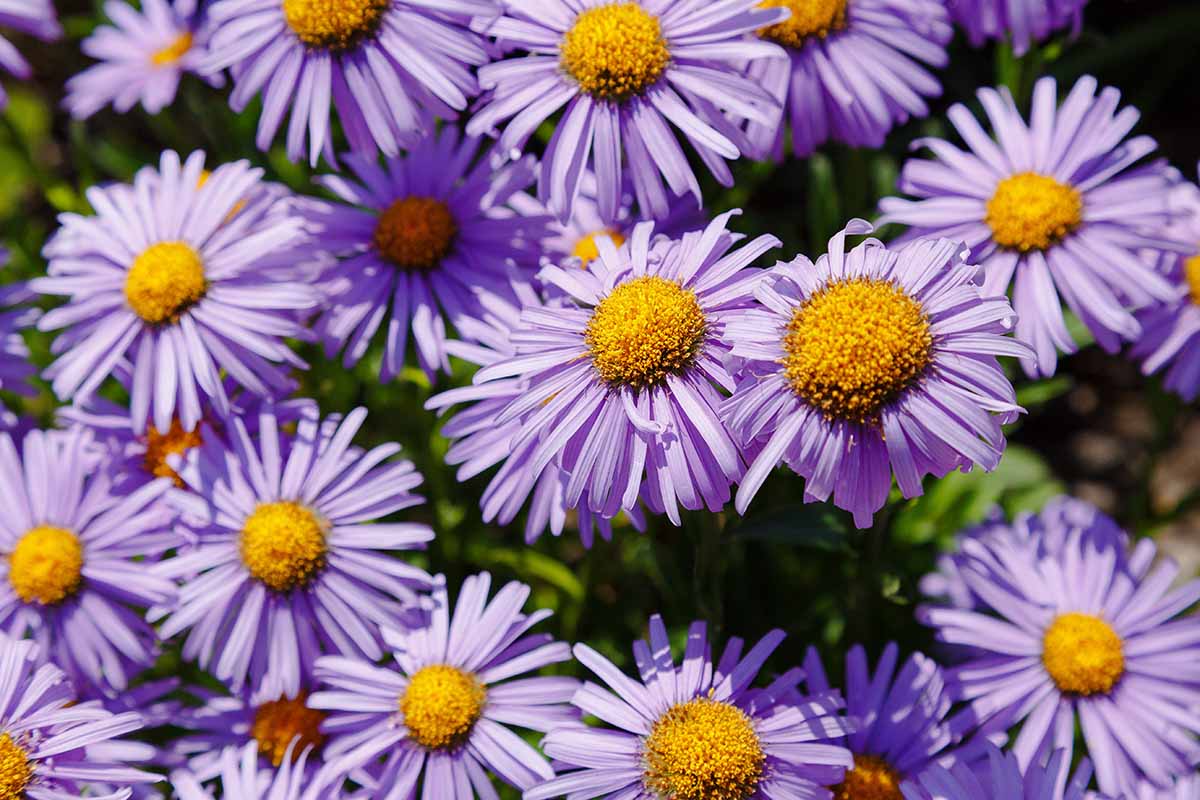I know, you thought you were reading an article on a gardening website, and here we are talking about some sort of new haircut?
Nah, the Chelsea chop isn’t the latest lob. It’s actually a method of pruning flowers to encourage more blossoms and stronger growth.

We link to vendors to help you find relevant products. If you buy from one of our links, we may earn a commission.
Knowing when to use the Chelsea chop and how to make use of it can completely change up your garden.
It improves blooming, allows you to change up the blossoming schedule, and can prop up droopy stems.
This guide will help you, from start to finish. Here’s what we’re talking about:
What You’ll Learn
What Is the Chelsea Chop?
The Chelsea chop was popularized at the Chelsea Flower Show in London, England, though gardeners were informally using this method of pruning long before.

For tall, herbaceous perennials, this is a fantastic method to know and use. Especially if you have plants that tend to want to reach for the sun, so they end up looking a little lopsided.
Each stem you chop will be encouraged to form side shoots, meaning you’ll have more blossoms than you would have had otherwise.
It doesn’t take much to make this method happen. You simply need sharp, clean secateurs or scissors.
The other vital tool is a bit of bravery on your part. I know it feels a bit scary to whack a plant down without any finesse. But I promise, it will all work out in the end.
When to Prune
The key to doing the Chelsea chop right is nailing the timing.
It won’t do you any good at all if you slice down your plants in the fall. Well, it might, but then you won’t be doing the Chelsea chop method.

For those living in England (and areas with a similar climate, like the Pacific Northwest), the timing is simple.
Just wait for the good old Chelsea Flower Show to roll around, and it’s time to go to work. This happens in late May, in case you aren’t up on your Royal Horticultural Society goings-on.
For everyone else, adjust accordingly. If you’re a bit more north in North America, you’re probably looking at mid-June.
Those in warmer coastal or southern climates should probably be ready to go to work in late April.
You’re looking to trim when the plants have developed a good amount of height but aren’t budding out yet. And it isn’t the end of the world if you do it just a bit late or early. That’s the beauty of this simple process.
How to Make the Cut
When we are pruning our fruit trees and roses, we have to take such care to really nail the right cuts.
Cut just above an outward-facing node. Make the cut at an exact 45-degree angle. Remove all but five canes. You probably know the drill.

One of the nice things about this method is that it isn’t at all precise. If you had a lawn mower with a tall enough blade, you could do it that way.
To make the cut, you can simply grab a handful of stems and chomp your way through them using your clippers. You want to trim each plant down by one-half to one-third.
You certainly don’t have to make the cuts even and straight. If you want, trim the plants a bit unevenly to create more of a wild, natural look. Or trim them higher in the back and shorter in the front for a bit of a border effect.

When you trim the entire plant, you delay flowering by at least a month. This can be helpful if you have a garden bed full of different plants that bloom all at the same time and you want to extend the display a bit.
If you don’t want to wait an extra month for the flowers to show up, there’s a second method to try, and we’ll discuss that next.
Go Halfway
The second way of doing the Chelsea chop is to only cut about half of the stems. Go in there with your pruners and cut down about half of the stems at random.
The benefit of doing it this way is that you will still have flowers at the normal time as well as others that bloom later, there will just be fewer of them.

The other benefit is that the shorter stems will support the tall flower heads, so they’ll be less prone to toppling over.
If you’ve ever had a big patch of floppy flowers, you know how annoying it is when they look all splayed out and weak.
Doing the half chop is basically a natural method of propping up your flowers. It’s like staking them to hold them up without using any actual stakes.
Plus, it extends the flowering period because the stems that you cut will still grow and bloom, they’ll just do it later than the ones you didn’t cut down.
The Plants You Can Chop
This isn’t the right method for annuals or woody perennials. Stick to those plants that are (primarily) herbaceous and grow in big clumps, such as:
- Agastache
- Artemisia
- Aster
- Bee Balm/Bergamot
- Bellflower
- Black-Eyed Susan
- Chrysanthemum
- Coneflower
- Cranesbill Geranium
- Goldenrod
- Joe-Pye Weed
- Heliopsis
- Lavender
- Penstemon
- Phlox
- Sedum
- Shasta Daisy
- Tansy
- Vernonia
- Yarrow
Give ‘Em the Chop
There really isn’t much to the Chelsea chop, but it can have an oversized impact on the blossoming of your plants.

Are you going to give this method a go this spring? What plants will you be using it on? Give us an update in the comments.
For some additional help on shaping up your plants, you might want to check out a few of our other guides, including: